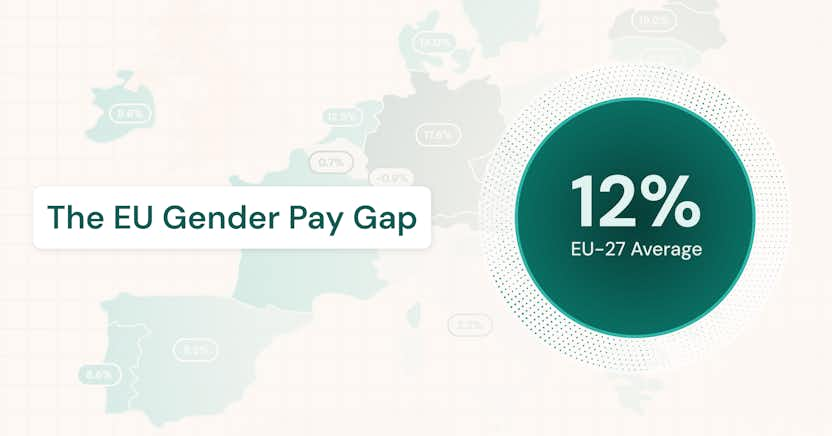Employee Performance Management in a Multigenerational Workforce

Learn more about the following beqom products
A message from Vismay Gada, beqom’s Chief Evangelist Officer
For two decades, I've worked at the intersection of compensation, performance, and technology and I've seen the same pattern repeat: organizations invest millions in HR systems, only to see their employees remain disengaged. Why?
Because the compensation and performance frameworks themselves are broken. In a world where the workforce spans four generations, it is impossible to confidently say that a single approach fits all. Organizations keep trying to standardize performance reviews, but the reality is that people are not standard. They come from different generations, grew up with different expectations, and are motivated by different things.
At its core, performance management is supposed to align individual effort with business goals. We measure performance to ensure that employees are productive, accountable, and delivering impact where it’s needed. Yet, most systems miss a critical first principle: knowing your employees. The way a twenty two year old sees value and purpose is not the same as someone who has spent three decades in the workforce. That disconnect is what makes performance management fail so often.
Why do we measure performance in the first place?
Before we talk about fixing performance management, we need to ask a simple question: why do we measure performance in the first place?
The purpose is alignment. When done right, performance management ensures that the right people are working on the right things in the right way. It's a feedback loop between company strategy, manager behavior, and employee motivation. Measurement itself isn't the goal. The goal is to use measurement to drive clarity, improvement, and accountability.
But here's the problem. The workforce isn't a uniform group of people working toward the same personal goals. The modern workplace brings together Baby Boomers, Gen X, Millennials, and Gen Z, each shaped by different life experiences, technologies, and value systems. Trying to measure and motivate all of them through the same annual review form is like speaking one language to four different audiences.
Generational diversity and what drives performance
Several studies have shown that generational cohorts differ in how they view work, career growth, and recognition (ResearchGate, 2024).
- Baby Boomers tend to value loyalty, structure, and purpose.
- Gen X values independence and results.
- Millennials focus on growth, flexibility, and balance.
- Gen Z, the newest cohort, seeks meaning, belonging, and constant feedback.
These differences aren't personality quirks. They are reflections of the environments each generation came from. Boomers grew up in a world of hierarchy and job security. Millennials and Gen Z entered the workforce during economic volatility, social change, and digital transformation. That shapes how they see work and how they define success.
For example, younger employees expect frequent feedback and recognition as proof of progress (Kaplan.com, 2024). They are used to real-time validation, so waiting twelve months for an annual review feels irrelevant. On the other hand, Baby Boomers often prefer structured, formal conversations with leaders that are meaningful but not constant (CPSHR, 2024).
The misalignment problem
Most organizations treat performance management as a compliance process rather than a motivation system. They define goals, conduct annual reviews, rate employees, and move on. What they miss is the context.
A Harvard Business Review study noted that while generational differences are often overstated, ignoring them entirely leads to disengagement and friction (HarvardBusiness.org, 2020). The issue isn't whether generations differ; the issue is how organizations respond to those differences. When everyone is forced into the same framework, managers spend more time chasing paperwork than improving performance.
Consider a multigenerational team working on a digital transformation project. The Gen Z analyst craves immediate feedback to adjust and improve. The Millennial project manager values collaboration and flexibility. The Gen X leader wants autonomy and clear results. The Boomer executive is driven by purpose and legacy. A single rating scale or one-time review cannot capture this diversity. Instead of creating alignment, it creates friction.
Back to basics: the three questions every employee needs answering
If we strip performance management down to its first principles, it should answer three questions for every employee:
- Do I know what is expected of me?
- Am I receiving feedback that helps me improve?
- Do I feel recognized and valued for my contribution?
The answer to these questions will differ by generation. What connects them is the need for clarity and motivation, not the mechanics of the process. Research from Frontiers in Psychology (2024) found that multigenerational teams perform best when managers adapt leadership styles and feedback methods to individual needs rather than enforcing uniformity.
Tailoring performance management by generation
To make performance management relevant, we must stop pretending that one design fits all. Organizations should build one flexible system with multiple pathways. The goal is personalization, not stereotyping.
Generation | What Drives Them | Effective Feedback Approach |
|---|---|---|
Gen Z | Growth, purpose, validation, belonging | Continuous feedback, coaching-style conversations, visible progress tracking |
Millennials | Development, autonomy, balance | Regular check-ins, collaborative goal setting, skill development plans |
Gen X | Independence, results, efficiency | Outcome-based reviews, trust-based management, less frequent formal reviews |
Baby Boomers | Purpose, recognition, legacy | Strategic conversations, mentorship roles, acknowledgment of expertise |
The role of technology
Technology has become the enabler of modern performance management. With digital tools, continuous feedback can be delivered, recognition can be visible across teams, and performance data can reflect behavior as well as output.
However, technology should not replace human connection – it should amplify it. Younger generations appreciate digital accessibility, while everyone values authenticity. A quick check-in on Slack cannot substitute for a meaningful conversation about career goals.
Organizations should blend both. Digital tools can capture continuous feedback, while quarterly in-person or virtual check-ins can provide the context and reflection that real performance discussions require.
Moving beyond reviewing to motivating
If we take the concept further, performance management should evolve from measurement to motivation. It should motivate employees, not simply audit them.
This means managers must become coaches. Instead of focusing on ratings, they should focus on clarity, recognition, and development. Studies show that when employees understand how their work connects to the company’s purpose, productivity and engagement rise significantly (Frontiers in Psychology, 2024).
For younger employees, that connection may come through impact stories and recognition. For older employees, it may come through strategic influence and mentorship. The intent is the same: understanding generational differences, and aligning personal purpose with organizational purpose.
The risks of differentiated performance management systems
Designing differentiated performance management systems is not easy. It adds complexity and requires manager capability. There is also the risk of over-segmenting employees based on generational stereotypes. The Harvard research reminds us that similarities across generations often outweigh differences (HarvardBusiness.org, 2020).
The goal is not to build four separate systems, but to build one flexible system with multiple pathways. Fairness and consistency must coexist with personalization. Employees should feel that the system recognizes them as individuals without creating inequities.
The path forward: actions for leaders
Designing differentiated performance management is complex, but the payoff—increased engagement and productivity—is significant. The goal is to make fairness and consistency coexist with personalization.
To start, companies should implement these concrete steps:
- Introduce monthly "pulse" check-ins: Stop relying solely on annual reviews. Make feedback a continuous process.
- Train managers: Make sure they understand what type of feedback or recognition is most helpful for the employee.
- Use data to personalize: Use technology to gather and analyze feedback without overwhelming employees.
Reinforce purpose constantly: Ensure managers connect individual KPIs and goals back to the company’s strategic mission.
Conclusion
Employee performance management isn't broken because people changed. It's broken because the systems did not. Generational diversity isn't the problem; it's the opportunity.
When organizations start from first principles—clarity, feedback, and recognition—and layer on an understanding of what drives each cohort, they create a performance management system that feels human again.
The future of performance management isn't about new forms or new ratings. It's about meeting people where they are, understanding what drives them, and helping them perform with purpose. That is how performance turns into progress.
By Vismay Gada, Chief Evangelist Officer at beqom
References
- ResearchGate (2024). Generational Differences in Attitudes Towards Work and Career: A Systematic Literature Review.
- Kaplan (2024). Generations in the Workforce: HR Industry Analysis.
- CPSHR (2024). Managing Generational Differences in the Workplace.
- Harvard Business Review (2020). Unlocking the Benefits of Multigenerational Workforces.
Frontiers in Psychology (2024). Adapting Leadership and Performance Management in Multigenerational Teams.
Get in touch
Ready to take the next step and build a pay strategy that works for your unique team? Get in touch with our experts today to learn how beqom can help.







